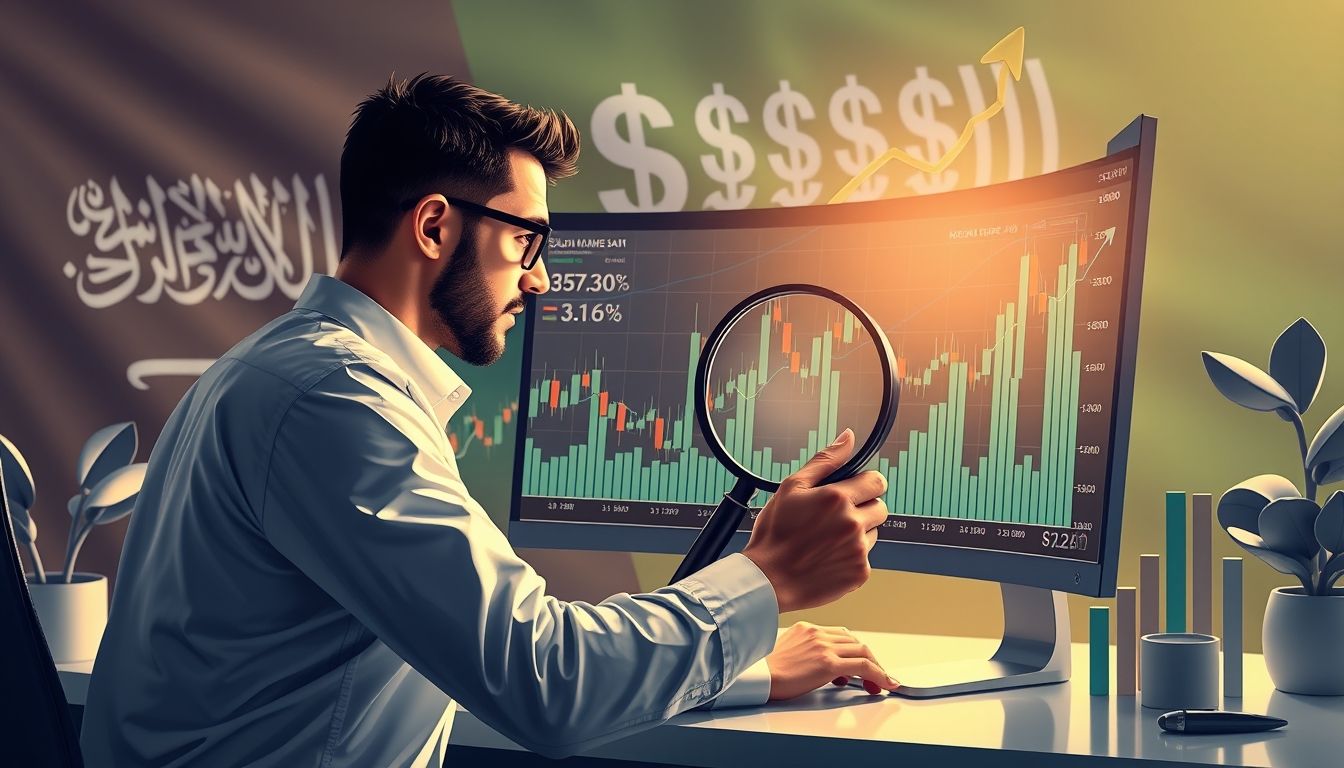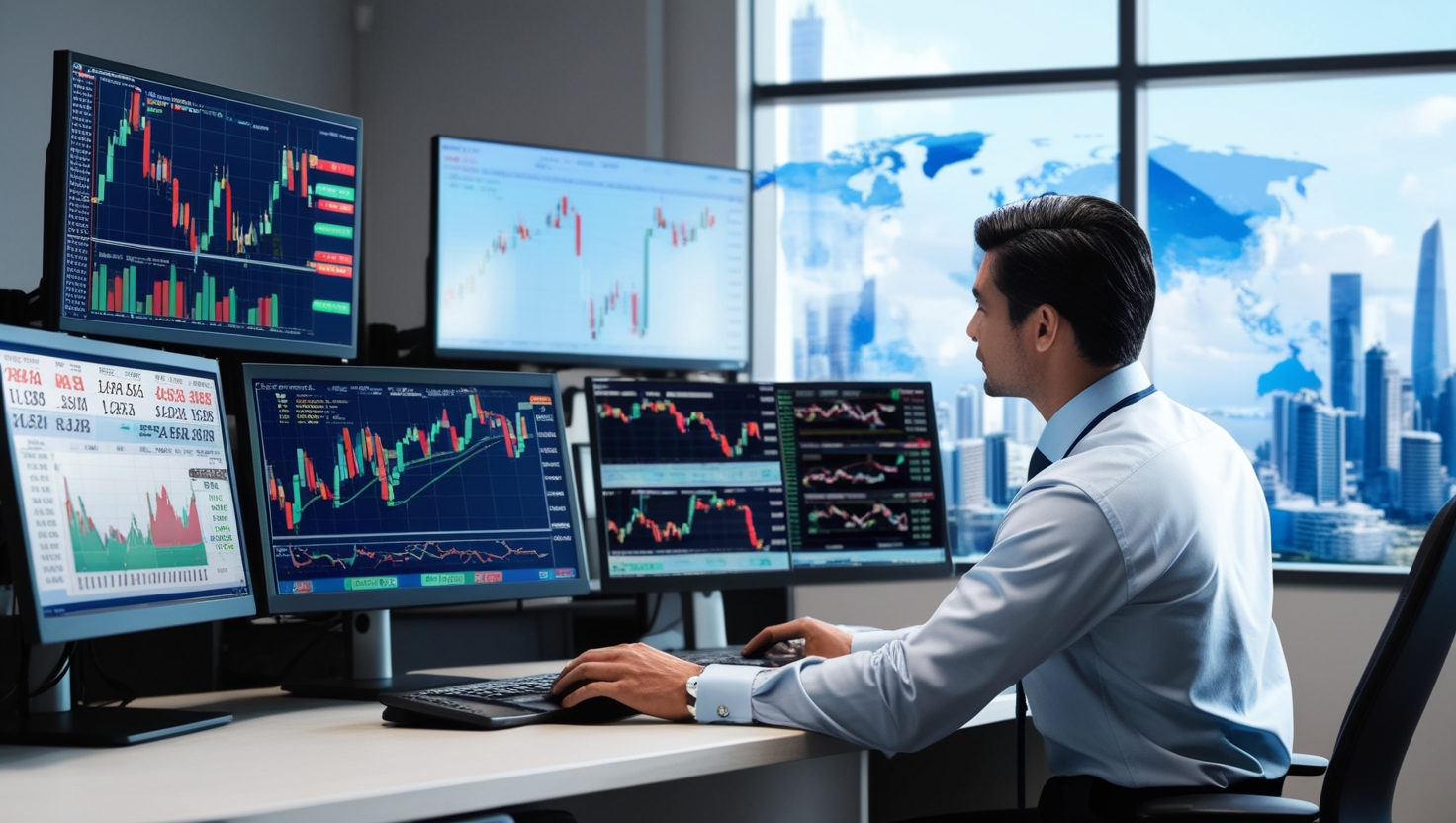Introduction to Quantitative Trading in Volatile Markets
Volatile financial markets are characterized by significant and unpredictable price fluctuations, making trading a significant challenge for traditional traders. In contrast, Quantitative Trading offers a structured approach based on mathematical models and computer algorithms to capitalize on these fluctuations. This article aims to explore advanced quantitative trading strategies that can be applied in volatile markets to achieve sustainable profits.
Chapter 1: Understanding Volatile Markets
Characteristics of Volatile Markets
Volatile markets have several key characteristics:
- High Volatility: Significant price changes in short periods.
- Unpredictability: Difficulty predicting price direction accurately.
- High Sensitivity to News and Events: Rapid response to economic and political news.
- Alternating Periods of Rise and Fall: Recurring cycles of price increases and decreases.
Example: Arab markets experienced sharp fluctuations during the COVID-19 pandemic due to economic uncertainty.
Measuring Volatility
There are several ways to measure volatility in financial markets, including:
- Volatility Index (VIX): Measures market expectations of future volatility based on option prices.
- Standard Deviation: Measures the dispersion of prices around their average.
- Average True Range (ATR): Measures the average range of price movements over a specific period.
Example: Using the VIX index to determine levels of fear in the U.S. market.
Chapter 2: Fundamentals of Quantitative Trading
Concept of Quantitative Trading
Quantitative trading is a trading style that relies on the use of mathematical and statistical models to make trading decisions. This includes:
- Data Collection: Collecting price data, economic indicators, and other relevant data.
- Data Analysis: Using statistical and analytical tools to discover patterns and relationships in the data.
- Model Building: Developing mathematical models to predict price movements.
- Trade Execution: Using algorithms to execute trades automatically based on model signals.
Importance of Quantitative Trading in Volatile Markets
Quantitative trading offers several advantages in volatile markets:
- Speed: Ability to make quick trading decisions based on data.
- Objectivity: Avoiding emotional biases in decision-making.
- Efficiency: Ability to analyze large amounts of data quickly and efficiently.
- Diversification: Ability to trade a wide range of assets simultaneously.
Chapter 3: Quantitative Trading Strategies in Volatile Markets
Moving Averages Strategy
This strategy relies on using moving averages to determine market direction and entry and exit signals. Two different moving averages can be used to generate trading signals. For example, a short-term moving average (such as 20 days) and a long-term moving average (such as 50 days) can be used. When the short-term moving average crosses above the long-term moving average, it is considered a buy signal, and vice versa.
Mean Reversion Strategy
This strategy is based on the idea that prices tend to return to their average over the long term. Assets that have deviated significantly from their average are identified, and then assets that have fallen significantly are bought, and assets that have risen significantly are sold, expecting prices to return to their average.
Trend Following Strategy
This strategy relies on identifying the prevailing trend in the market (upward or downward) and then entering into trades that align with this trend. Indicators such as the Relative Strength Index (RSI) and the Moving Average Convergence Divergence (MACD) can be used to identify the trend.
Scalping Strategy
This strategy relies on making a large number of small trades to take advantage of small price movements. This strategy requires high execution speed and the ability to analyze data quickly.
Chapter 4: Building a Quantitative Trading Model
Setting Goals
Clear goals must be set for the trading model, such as:
- Targeted Rate of Return: Determining the rate of return that the model seeks to achieve.
- Acceptable Risk Level: Determining the maximum losses that can be tolerated.
- Target Assets: Identifying the types of assets that will be traded (stocks, bonds, currencies, etc.).
Data Collection
Relevant historical data must be collected, such as:
- Asset Prices: Historical price data for the target assets.
- Economic Indicators: Data on GDP, inflation, unemployment, etc.
- News and Events: Data on economic and political news and events that may affect prices.
Data Analysis
Data must be analyzed using statistical and analytical tools, such as:
- Statistical Analysis: Analyzing probability distributions, correlation, regression, etc.
- Technical Analysis: Using charts and technical indicators to identify patterns and trends.
- Machine Learning: Using machine learning algorithms to predict price movements.
Model Testing
The model must be tested on historical data to evaluate its performance. Metrics such as:
- Rate of Return: Average return achieved by the model during the testing period.
- Sharpe Ratio: Measures risk-adjusted return.
- Maximum Drawdown: Largest loss incurred by the model during the testing period.
Chapter 5: Risk Management in Quantitative Trading
Determining Trade Size
Trade size should be determined based on the acceptable risk level. Rules such as:
- 1% Rule: Risking only 1% of capital on each trade.
- Kelly Criterion: Determining trade size based on the probability of profit and loss.
Setting Stop-Loss Orders
Stop-loss orders should be placed to protect capital in case prices move against expectations. The stop-loss level should be determined based on volatility analysis and the acceptable risk level.
Diversification
The investment portfolio should be diversified to reduce risks. Diversification can be achieved by trading a wide range of assets or using different trading strategies.
Chapter 6: Quantitative Trading Tools and Software
Trading Platforms
There are many trading platforms that support quantitative trading, such as:
- MetaTrader 5: A popular trading platform that supports the MQL5 programming language.
- TradingView: An online trading platform that provides advanced technical analysis tools.
- Interactive Brokers: A trading broker that provides an Application Programming Interface (API) for quantitative trading.
Programming Languages
Programming languages such as Python and R are widely used in quantitative trading. These languages provide powerful libraries and tools for data analysis and model building.
Data Analysis Libraries
Many open-source data analysis libraries are available, such as:
- Pandas: A library for data analysis and processing.
- NumPy: A library for scientific computing.
- Scikit-learn: A library for machine learning.
Chapter 7: Practical Examples of Quantitative Trading Strategies
Example 1: Using moving averages to trade Aramco stock in the Saudi market. The stock is bought when the short-term moving average (20 days) crosses above the long-term moving average (50 days), and the stock is sold when the short-term moving average crosses below the long-term moving average.
Example 2: Using a mean reversion strategy to trade foreign currencies. The currency that has fallen significantly below its average is bought, and the currency that has risen significantly above its average is sold, expecting prices to return to their average.
Chapter 8: Challenges and Risks in Quantitative Trading
Overfitting
Overfitting occurs when the model is designed to fit the historical data perfectly, but it fails to perform well on new data. Overfitting should be avoided by using techniques such as cross-validation.
Data Issues
Historical data may be inaccurate or incomplete, which affects the performance of the model. The quality of the data must be ensured before using it in building the model.
Market Changes
Market characteristics may change over time, leading to a deterioration in the performance of the model. The performance of the model should be monitored regularly, and it should be re-evaluated and updated when necessary.
Chapter 9: The Future of Quantitative Trading
Artificial Intelligence and Deep Learning
Artificial intelligence and deep learning are expected to play an increasingly important role in quantitative trading in the future. These technologies can be used to analyze complex data and discover hidden patterns that are difficult to discover using traditional methods.
Alternative Data
Alternative data includes non-traditional data sources, such as social media data, satellite data, and credit card transaction data. This data can be used to improve the accuracy of forecasts.
Chapter 10: Tips for Quantitative Traders
- Start Small: Start by trading small amounts of capital until you gain experience and confidence.
- Keep Learning: Continue to learn the latest technologies and strategies in quantitative trading.
- Be Patient: Quantitative trading requires time and effort to achieve success.
- Stay Disciplined: Follow your trading plan and adhere to risk management rules.
Disclaimer: This article is for educational purposes only and does not constitute investment advice. Readers should consult a qualified financial advisor before making any investment decisions.



